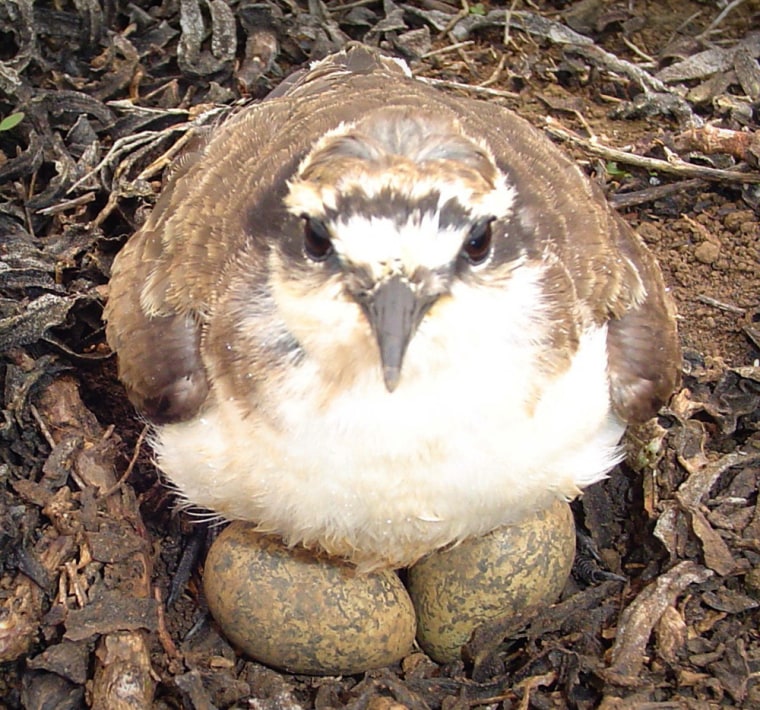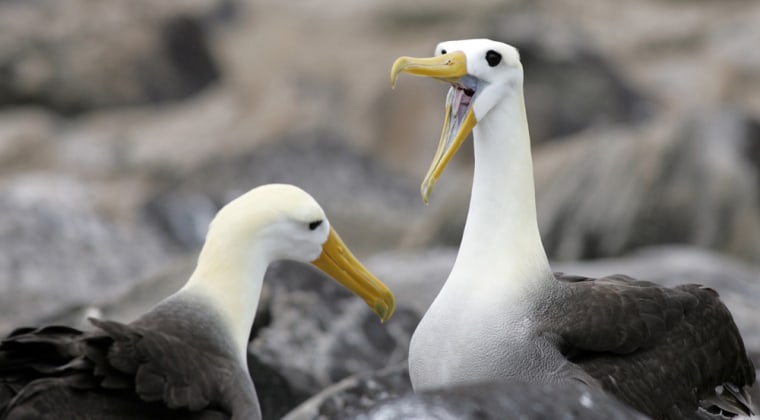An international conservation group launched an ambitious plan Thursday to raise tens of millions of dollars to save 189 endangered birds over the next five years, including 17 that are facing extinction in the United States.
U.K.-based BirdLife International is calling on environmental groups, corporations and individuals to contribute the $38 million needed for what it is dubbing the Species Champions initiative. The money will be used to protect habitats, raise awareness and reduce invasive species that often eat bird eggs and compete for food.
The campaign comes as the numbers of extinct birds is on the rise, mostly due to poaching, habitat loss and development. In the last three decades, 21 species have been lost, including the Hawaiian honeycreeper Poo-uli, Hawaiian Crow or alala and the Spixs Macaw from Brazil, BirdLife said.
"Critically endangered birds can be saved from extinction through this innovative approach," the group's Chief Executive Mike Rands said in a statement. "This is an enormous challenge, but one we are fully committed to achieving in our efforts to save the world's birds from extinction."
First on the list
The first birds to benefit will be the Bengal Florican in Cambodia, the Belding's Yellowthroat in Mexico, Djibouti Francolin in Djibouti and Restinga Antwren from Brazil. All have seen their numbers drop from a few thousand to a few hundred and their ranges limited to a few isolated locations.
The initiative includes creating a conservation plan in Mexico, regenerating forests in Djibouti, establishing a protected area in Brazil and restoring grasslands in Cambodia where less than a thousand of the Bengal Florican are found.
"Critically endangered birds represent a very vulnerable part of global biodiversity, and all need urgent action," Mark Gately, the director of the Wildlife Conservation Society's Cambodia program, which is working to protect the Bengal Florican.

"Through conserving them, many sites and habitats important for other species will also be conserved," he said. "The funds raised will directly support that work, and also conserve grassland areas that are used by nearby villages to sustain their livelihoods."
All the birds targeted in the campaign are on the World Conservation Union's Red List of Threatened Species, which are defined as those on the brink of extinction.
Among them are the Black Stilt, a New Zealand shorebird whose numbers have been reduced to a handful, the Ivory-Billed Woodpecker rediscovered recently in Arkansas and the California Condor which is just now being slowly reintroduced into the wild.
Many like Taita Thrush in Kenya are confined to diminishing fragments of their former habitat. Others like the Red-headed Vulture are still widespread in Asia and still have populations measurable in thousands, but are in dramatic decline, having lost over 80 percent of their numbers in just three generations.
12 in Hawaii
Of the 17 birds in the United States, 12 are from Hawaii and their numbers have been reduced to the point where some are believed to be extinct, BirdLife said. Facing threats from food shortages, hurricanes and feral goats, birds like the Maui Parrotbill and Oloma'o have not been seen for years.
"We all have a negative impact on the environment, and we all have a little bit of blood on our hands when a species goes extinct," said Stuart Butchart, BirdLife's Global Species Program Coordinator. "The Species Champions initiative provides everyone with a personal opportunity to play their part in mitigating these impacts and in saving species from extinction."
BirdLife officials said the funding will also go to implementing environmental awareness programs, helping developing government conservation policies, creating protected area networks and carrying out surveys to better understand, assess and fight the threats facing the birds. Programs will also be aimed at removing invasive species, especially those that threaten island nesting species.
"The initiative is about raising funds to direct at the key people and organizations on the ground who can make a difference for these species on the brink of extinction," Butchart said. "It is the first time this approach has been taken in such a globally comprehensive and coordinated way for an entire class of organisms."
Background on the campaign is online at www.birdlife.org/action/campaigns/species_champions
